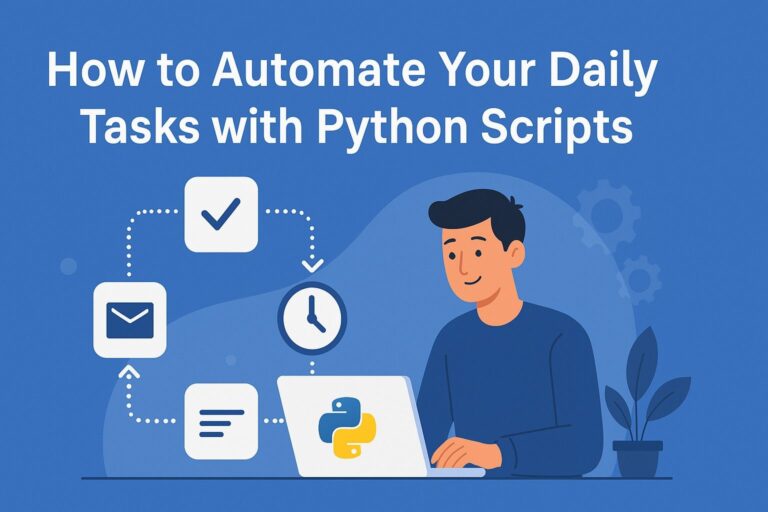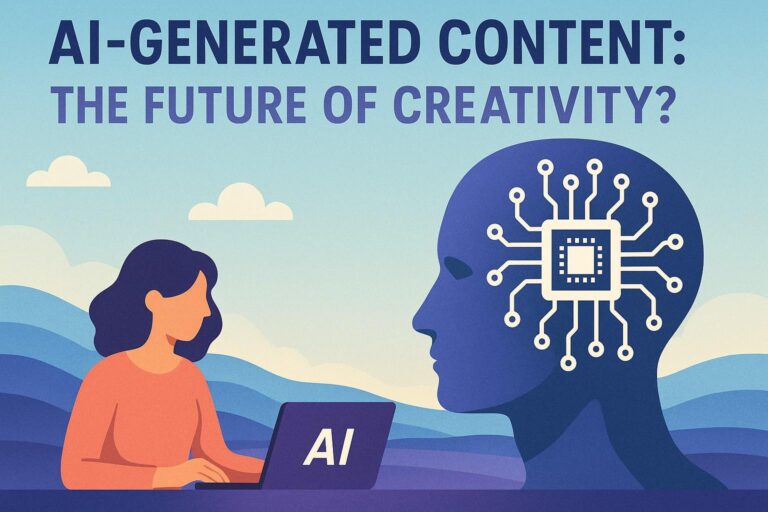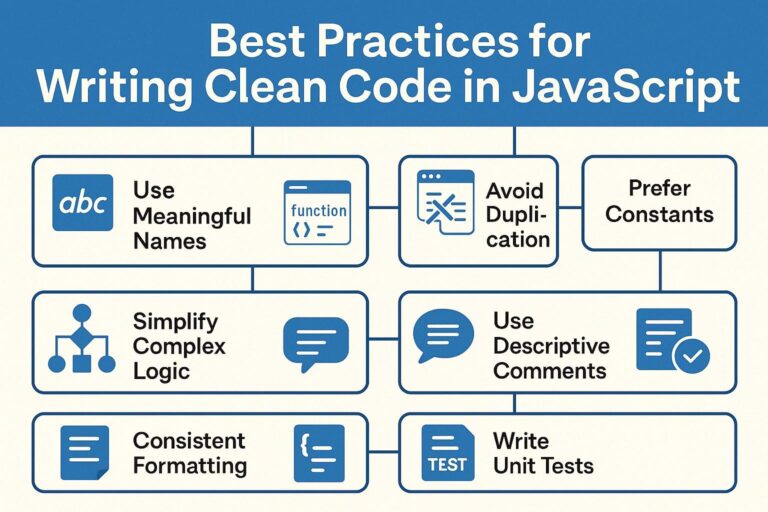
Artificial Intelligence (AI) is one of the most transformative technologies of our time. It powers innovations in medicine, finance, education, transportation, entertainment, and nearly every other field. From voice assistants and facial recognition to personalized product recommendations and predictive analytics, AI is everywhere.
But what exactly is artificial intelligence, how does it work, and why is it such a big deal? This guide provides a clear and comprehensive overview of AI for beginners.
What Is Artificial Intelligence?
Artificial Intelligence (AI) is the field of computer science that focuses on building machines capable of performing tasks that typically require human intelligence. These tasks include understanding language, recognizing patterns, solving problems, making decisions, and learning from past experiences.
In simple terms, AI enables machines to simulate cognitive functions such as:
- Understanding natural language
- Interpreting visual information
- Making data-driven decisions
- Learning from patterns and feedback
- Performing tasks autonomously
Unlike traditional programs that follow rigid rules, AI systems can adapt, improve, and make judgments in dynamic environments.
A Brief History of AI
The concept of intelligent machines has existed for centuries, but modern AI development began in the mid-20th century.
- 1950: Alan Turing published the paper “Computing Machinery and Intelligence” and proposed the Turing Test to measure a machine’s ability to exhibit intelligent behavior.
- 1956: The term “Artificial Intelligence” was coined during the Dartmouth Conference, marking the official start of AI as a research field.
- 1970s–1980s: AI research progressed slowly due to limited computing power and unrealistic expectations—this period is often referred to as the “AI Winter.”
- 1980s: Development of expert systems, which mimicked decision-making of human specialists, gained popularity in medical and business domains.
- 2000s–Present: AI experienced exponential growth due to advances in machine learning, big data, and cloud computing. Innovations like deep learning and GPU acceleration have driven modern breakthroughs.
How Does AI Work?
AI systems work by ingesting large volumes of data, identifying patterns, and using algorithms to make predictions or decisions. The core concept lies in training models to learn from data and improve over time.
Key Components of AI:
- Data: The raw input required for training AI models (e.g., text, images, numbers).
- Algorithms: Mathematical instructions that process data and identify patterns.
- Models: Trained systems capable of making predictions or performing tasks.
- Feedback Loops: Mechanisms to adjust models based on performance and new data.
Example Workflow:
- A spam detection system is trained using thousands of emails labeled as “spam” or “not spam.”
- The algorithm learns which words, phrases, or patterns are typical of spam.
- Once trained, the model classifies new incoming emails with increasing accuracy over time.
Types of Artificial Intelligence
AI is often categorized based on its capabilities:
1. Narrow AI (Weak AI)
- Specialized in a single task.
- Examples: Voice assistants, recommendation engines, facial recognition software.
- Most AI applications today fall into this category.
2. General AI (Strong AI)
- Hypothetical systems with the ability to perform any intellectual task that a human can.
- Capable of reasoning, problem-solving, and self-awareness.
- Still in the realm of research and theory.
3. Superintelligent AI
- A future vision where machines surpass human intelligence in all aspects.
- Often discussed in philosophical and ethical debates.
- Raises concerns about control, alignment, and safety.
Subfields of AI
AI encompasses several specialized areas:
- Machine Learning (ML): Algorithms that allow computers to learn from data.
- Deep Learning: A subset of ML using neural networks, effective for image and speech recognition.
- Natural Language Processing (NLP): Enables machines to understand and generate human language.
- Computer Vision: Enables machines to interpret visual information from the world.
- Robotics: Combines AI with mechanical engineering to create autonomous machines.
- Reinforcement Learning: A type of learning where agents take actions to maximize rewards.
Real-World Applications of AI
AI is being applied across industries to solve real-world problems:
Healthcare
- AI-powered diagnostics analyze medical images for early disease detection.
- Virtual health assistants support patient care and medication adherence.
- Predictive models assist in identifying at-risk patients.
Finance
- Fraud detection systems analyze transaction patterns.
- Algorithmic trading systems make high-speed financial decisions.
- Chatbots and virtual agents handle customer inquiries.
Retail
- Recommendation systems personalize shopping experiences.
- Inventory management systems forecast demand and optimize logistics.
- Visual search and automated checkout improve user convenience.
Transportation
- Autonomous vehicles interpret sensor data and navigate complex environments.
- AI helps optimize delivery routes and reduce fuel consumption.
- Predictive maintenance reduces downtime in public transport systems.
Education
- Adaptive learning platforms customize curriculum for students.
- Automated grading tools reduce teacher workload.
- AI tutors provide on-demand academic support.
Benefits of AI
- Automation: Reduces the need for human intervention in repetitive tasks.
- Scalability: Enables real-time processing of vast data streams.
- Speed: Performs calculations and analysis much faster than humans.
- Accuracy: Minimizes human error in data-driven environments.
- Personalization: Delivers tailored content, recommendations, and services.
Challenges and Concerns
While AI presents numerous benefits, it also raises significant challenges:
- Job Displacement: Automation could impact employment in various sectors.
- Bias in Algorithms: AI systems can reflect and amplify societal biases if trained on biased data.
- Lack of Transparency: Many AI models operate as “black boxes,” making their decision-making hard to interpret.
- Security Risks: AI systems can be vulnerable to adversarial attacks or misuse.
- Ethical Dilemmas: Concerns around surveillance, consent, and decision-making authority.
The Future of Artificial Intelligence
The future of AI lies in building systems that are not only powerful but also ethical, explainable, and aligned with human values. Areas of ongoing research include:
- Explainable AI (XAI): Making AI decisions transparent and understandable.
- AI Governance: Creating regulations to ensure responsible development and use.
- Human-AI Collaboration: Enhancing, not replacing, human capabilities.
- General AI: Developing systems with broader cognitive abilities.
Industries are expected to increasingly integrate AI into workflows, products, and decision-making processes, making AI literacy essential for individuals and organizations alike.
Final Thoughts
Artificial Intelligence is more than just a technological trend—it is a fundamental shift in how we interact with information, machines, and the world around us. As AI continues to evolve, so does its impact on society, industry, and daily life.
Understanding the basics of AI is not limited to engineers or data scientists. Whether you’re a student, business leader, or curious learner, grasping the core concepts of AI empowers you to engage with it responsibly and meaningfully.
The future belongs to those who can collaborate with intelligent systems, ask critical questions, and ensure that AI serves the broader good.

I’m Shreyash Mhashilkar, an IT professional who loves building user-friendly, scalable digital solutions. Outside of coding, I enjoy researching new places, learning about different cultures, and exploring how technology shapes the way we live and travel. I share my experiences and discoveries to help others explore new places, cultures, and ideas with curiosity and enthusiasm.






